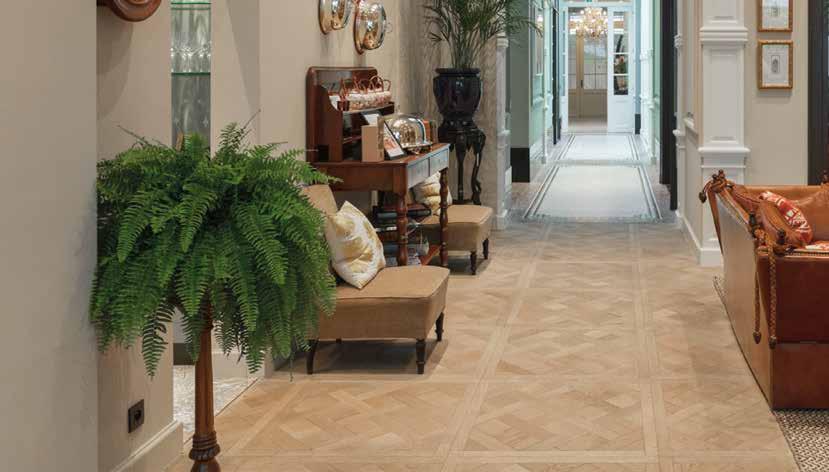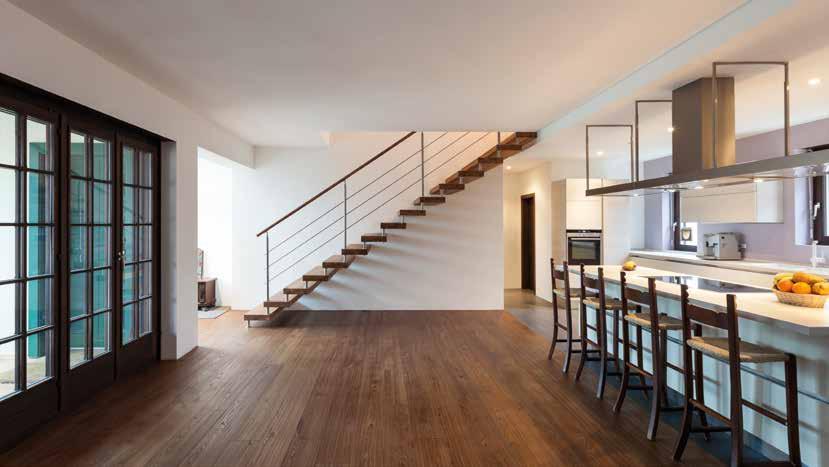Special
Who has walk behind machines for roughening up old tiles, scraping the screed, and removing old carpet, tiles, adhesive residue, etc?
CONCRETE GRINDERS UNDER THE SPOTLIGHT SIMILAR TO PARQUET SANDERS, YET A COMPLETELY DIFFERENT MACHINE In this article we consider how to grind concrete. Basically, you have two sorts of concrete grinding machines, one of which is operated manually, whilst you walk behind the other one. Here we only cover the latter one because it is mainly due to this machine that professional floor fitters stand out from better quality odd job workers.
Up to seven times
Metal with diamond
The job becomes more complex if you want to remove epoxy layers or level a concrete floor. Generally speaking, two grinding sessions will be necessary for both. Repairing a damaged concrete floor is another job all together, but it is basically feasible in two sanding sessions. This involves recasting the damaged section, but, after that, the floor will no longer form one whole (combination of old and new).
If you grind concrete, you should use diamond because that is the ideal material for stripping a floor of elements such as adhesive residue and old coatings and dealing with old marks or scuffed patches. Diamond causes scratches, and that lays a good foundation for the adhesion of a coating or adhesive which is applied later. It’s worth knowing with machines which you have to walk behind that they are usually larger rotary sanders or sanding machines fitted with planetary rotating heads with diamond discs. The diamonds are bound with metal and it is ideal if there is a specially fitted dust suction unit because this job generates lots of dust. A dustless operation might be virtually impossible, but it’s best to keep everything as dust-free as possible.
The machine ‘teeth’ We also need to mention that there are four to six segments under the rotating swivel plate. You can regard these segments as sorts of ‘teeth’ for the machine, where each segment has its own function. We can use a rough comparison to sanding machines which are generally used to sand parquet. The segments are actually comparable to the grain size of sandpaper. The range goes from very rough with a low grain size for the preparation to a very high one for the finish.
We start with the easiest job, namely removing old coatings. One grinding session with a sanding disc with a grain size of 60 can suffice for that purpose. Indeed, one session may be enough because the floor was already smooth prior to the application of the coating which you want to remove.
If you want to polish, you have to realise that this is the most labour-intensive of all operations. Indeed, not only do you have to grind the concrete, but also you then have to polish it and that can take a long time. In this case five sessions are often necessary, but even up to seven is not exceptional. Sources: Various manufacturers, schuurmachineskopen.nl, and profloorcare.nl
What’s on the market ? Bona
If you want to compare the standard parquet sander, the comparison virtually grinds to a halt with the fact that you operate them both manually. With the concrete grinder you only see two wheels which are fitted at the front and help you to move the machine. On the other side there is the rotary sanding disc enclosed in a steel cage. The concrete grinding machine works so effectively because the motor is fitted on top of the grinder so that users can exert plenty of pressure on the concrete. We can also say that it is always possible to add extra weight to increase the grinding pressure. If we consider the concrete grinders which are available on the market, you will notice that there is a considerable range, but also that there are some really giant-size machines which can easily weigh up to 400kg. It’s important to realise that not every concrete floor requires the same grinding and it all depends on the desired result. For instance, not only is there a difference between ‘normal’ concrete and terrazzo and synthetics, but also you also have to consider the end result. Will you be grinding only once or, on the contrary, are you aiming for a perfectly polished concrete floor? You should be aware that in the latter case you might have to grind up to seven times.
Roughening up old tiles, grinding screeds, and removing old carpet and adhesive residue require hard intensive labour. Bona makes a priority of user comfort and has in its range a single-disc machine, the Bona FlexiSand 1.9, which can be fitted with a drive disc specially for such intensive labour, the Bona Concrete Disc. Various types of grinding segments can be attached magnetically to this base drive disc, depending on the required result.
Follow us on Facebook, Twitter, LinkedIn and Google+
Floor Forum International 121
13










